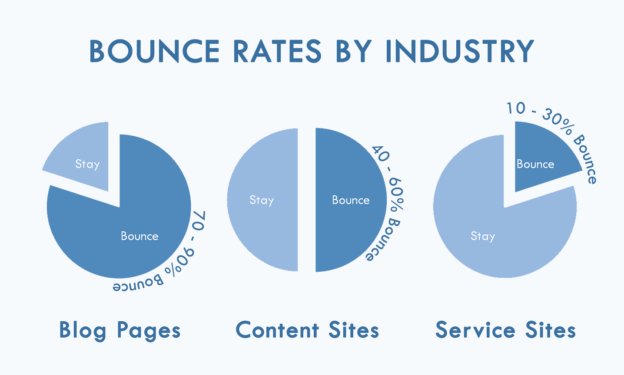A high bounce rate signals that visitors leave your website after viewing only one page, which can harm SEO rankings and reduce conversions. Improving user experience (UX) on your WordPress site is one of the most effective ways to keep visitors engaged and reduce bounce rate.
This guide explores actionable UX strategies to reduce bounce rate on WordPress websites.
Contents
1. Why Bounce Rate Matters
-
SEO Impact – Search engines interpret high bounce rates as low engagement, which can affect rankings.
-
Conversion Rates – Visitors leaving early won’t complete purchases, sign-ups, or inquiries.
-
User Satisfaction – A poor UX leads to frustration and decreases trust in your brand.
2. Key UX Factors Affecting Bounce Rate
-
Page Load Speed – Slow websites drive users away.
-
Mobile Responsiveness – Most traffic now comes from mobile devices.
-
Navigation & Structure – Confusing menus or layouts frustrate visitors.
-
Content Readability – Long paragraphs, poor fonts, or cluttered design reduce engagement.
-
Calls-to-Action (CTAs) – Weak or hidden CTAs prevent users from exploring further.
3. UX Improvements for WordPress
Tip 1: Improve Website Speed
-
Use caching plugins: WP Rocket, W3 Total Cache, or LiteSpeed Cache.
-
Optimize images: compress and use WebP format.
-
Enable lazy loading for media.
-
Use a Content Delivery Network (CDN) to serve content faster globally.
Tip 2: Mobile-Friendly Design
-
Use responsive WordPress themes like Astra, GeneratePress, or OceanWP.
-
Test mobile UX with Google’s Mobile-Friendly Test.
-
Ensure touch targets (buttons, links) are large enough.
-
Simplify menus and reduce dropdown layers.
-
Add breadcrumbs to help users know their location.
-
Include a search bar for easy content discovery.
Tip 4: Enhance Readability
-
Use short paragraphs and subheadings.
-
Use readable fonts (sans-serif) and proper line spacing.
-
Highlight important content with bold, lists, or callout boxes.
Tip 5: Optimize Internal Linking
-
Link related articles and pages to encourage further browsing.
-
Use plugins like Inline Related Posts or Yet Another Related Posts Plugin (YARPP).
-
Add prominent CTAs to encourage next steps.
Tip 6: Improve Visual Design
-
Use consistent color schemes and whitespace for clarity.
-
Avoid cluttered layouts that distract users.
-
Include images, videos, and infographics to complement content.
Tip 7: Engage Users With Interactive Elements
-
Add quizzes, polls, or comment sections to encourage interaction.
-
Include subscription forms for newsletters.
-
Offer personalized content recommendations.
4. Monitoring UX Improvements
-
Use Google Analytics to track bounce rate and engagement metrics.
-
Implement heatmaps (Hotjar, Crazy Egg) to see where users click and scroll.
-
A/B test layout changes, CTA placements, and content structure.
FAQ
Q: What is a good bounce rate for WordPress websites?
Generally, 26–40% is excellent, 41–55% is average, and over 70% may need UX improvements.
Q: Can slow hosting affect bounce rate?
Yes. A slow server increases page load time, directly impacting bounce rate.
Q: Does mobile optimization really matter?
Absolutely. Over 60% of traffic is mobile, and poor mobile UX increases bounce rate.
Q: Should I remove outbound links to reduce bounce rate?
No. Users often expect relevant outbound links. Focus on engagement instead.
Q: Can content layout affect bounce rate?
Yes. Poorly structured content with long paragraphs, no headings, or difficult navigation increases bounce rate.
👉 By implementing UX-focused improvements on your WordPress site, you can significantly reduce bounce rate, improve engagement, and increase conversions. Faster loading times, intuitive navigation, readable content, and interactive elements make your website more user-friendly and keep visitors exploring more pages.
